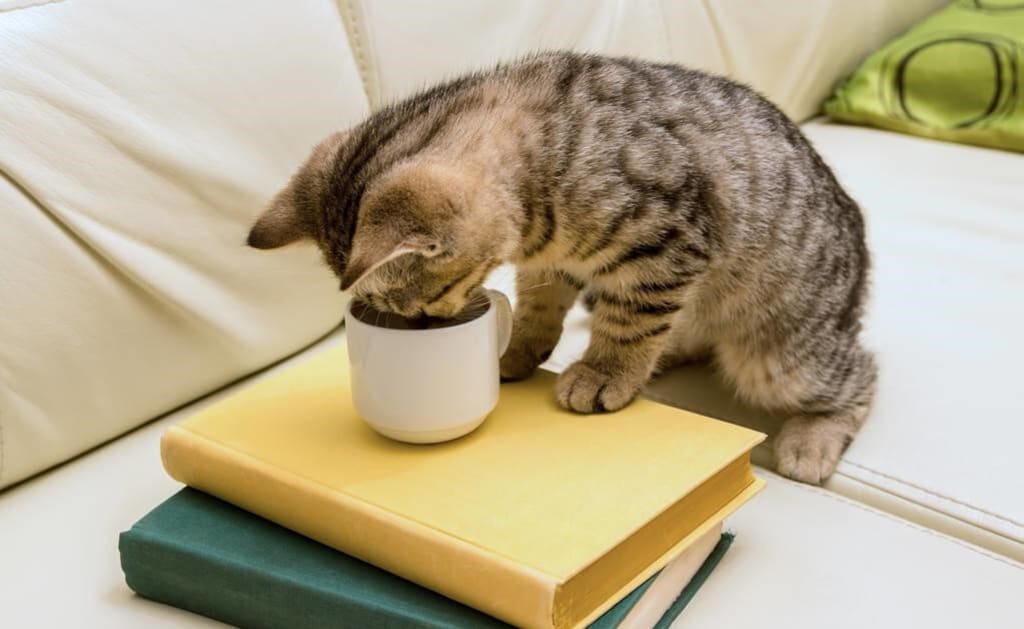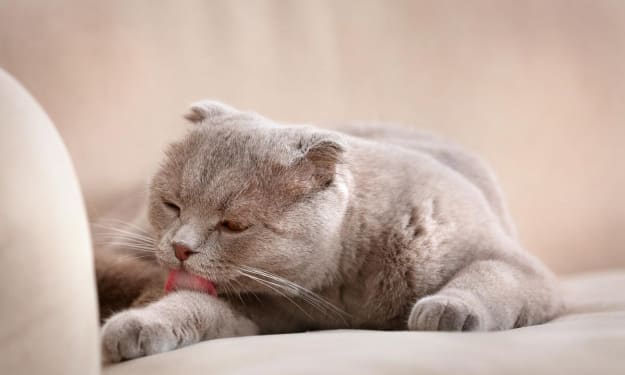What are cats thinking when they drink water
The mind of a cat is interesting

Does your cat also refuse to drink water from the basin? Is the cat more interested in water from the faucet, water from the bathroom, and water from your basin? This is a common situation in the process of cat ownership. When a cat is in this situation, it often indicates that the water bowl or water provided by the popper cooper to the cat does not meet the cat's needs. When raising a cat, the popper cooper needs to adhere to one principle: to give the cat access to fresh and larger water sources.
Three types of water sources will attract the domestic cat's attention, the first is the flowing water source, commonly from the faucet as well as the water in the toilet. Some cats have even learned the skill of interacting with sluice mechanisms by observing to drink this water. The second type of water source is related to aquatic animals and plants. The water from your fish and water plants will be the target of your cat's attention, and if the fish tank is filtered, your cat will be more interested. The third type of water source is the drinking water in the cup of the popper cooper, which also includes the water you just put in the basin.
What kind of water do cats need?
Cats have evolved to have a greater need for fresh water. In areas where cats lived, there was often "stagnant water" that was not flowing and therefore became unsuitable for plant and animal life. When drinking this water, cats often experience discomfort, resulting in vomiting or poor digestion for several days.
Young cats living in the wild will learn how to find water from older cats at around two months. In general, cats use a simple strategy when looking for water: they look at the plants and animals, or other animals, to determine how they drink. This means that if a water source always has other animals coming to drink here, then the cat will have more confidence in the water here.
The fish and plants in the water will also increase the cat's confidence. Due to the limited ability to smell, most cats cannot determine the actual nutritional value of water by simply sniffing, but cats do not want to try it easily, so observation becomes an important behavioral process for cats. If there are fish swimming in a body of water, then this will become the cat's preferred source of water. To remember this place, the cat will mark a clear path along the way by scent, and every day the cat will follow this path to drink here at almost a fixed time.
Cats living in the wild drink at a more regular period each day, and few cats will come to the water frequently. If a cat does this, it generally indicates that the cat is in poor health. Domestic cats retain this characteristic, and in fact, cats on a normal diet do not drink frequently, but the advent of dry cat food has changed the habits of cats. The excessively dry food has allowed some domestic cats to increase the frequency of their daily water intake by two to three times. If your cat is fed homemade cat meals, raw bones, or canned cat food as its main food, then the cat will drink much less frequently, which is normal.
In the absence of fish, aquatic plants will be another basis for the cat's judgment. However, the cat's experience plays an important influence. Experienced cats can identify some plants that are not good for the cat, but inexperienced domestic cats are sometimes unable to do so, so some cats will be affected by the plants in the process of drinking. Some cats will be allergic to them, and others will have health problems due to accidental ingestion of these plants.
In the absence of both fish and plants, cats can also observe other animals. Smart big cats will deliberately endure, and when young cats cannot stand the thirst and go to drink, these big cats observe. If these priority drinking cats are not serious, then the smart cats will go over to drink, otherwise, these cats will immediately run away.

Cats judge water quality by observation
When there are many cats in the house, each cat does not want to be the one to try first. Therefore, the water condition of the pet dog will become an important reference for the cat. When the dog goes to drink at a new water bowl, the other cats will happily walk over and then simply drink.
One of the results of this behavioral characteristic is that sometimes the cats in your home are reluctant to share the cat food bowl, but for the water bowl these cats are happy to share. This is precise because sharing water can increase each cat's confidence in swathing her. Especially for young cats, judging water quality is not something they are good at, and it takes experience to develop a more mature ability.
When there is no other animal to refer to, the popper cooper naturally becomes a perfect target for cats. Cats will observe what water they are drinking and then regard it as a trusted source. So you will find cats refusing to use their water bowl, but will gulp water from your cup. This indicates that the cat is not completely comfortable with the environment and that there are factors within the environment that make the cat feel nervous.
Sometimes the smell of water can make cats reluctant to drink, for example, some popper coopers give their cats tap water directly, and the smell of tap water can make many cats feel unhappy. At this point, you might as well just replace the water with plain water, which can reduce the stress of drinking for many cats, and trace elements can be compensated for by the cat's usual food.
Don't mind if your cat uses its paws when drinking. Modern animal behavior has found that each cat's drinking posture is very different, and this is related to both genetics and kitten experience. Every cat imitates its mother's behavior, and if the older cat used to drink with its paws, then the kitten will be happy to do the same.
Pawing can also be a newly learned skill. Some cats can only use their paws to assist in drinking because of the structure of the water bowl, and this experience will eventually solidify into the cat's habit. If you want your cat to refrain from this behavior, an important detail is to make sure the water surface is large enough.
Many popper coopers prepare the same cat food and water bowls for their cats, meaning that both bowls are the same size. In reality, the best choice for your cat should be a slightly larger water bowl, which will give your cat a more pronounced interest in drinking. In terms of placement, the food bowl and water bowl should be spaced apart, and some cats will be reluctant to drink from them if they are placed right next to each other.
Angry male cats will sometimes deliberately use the vicinity of the water bowl as a litter box, which is very similar to cats in the wild. When competing for cat territory or trying to deter other small animals, cats will leave this strong scent trail next to the water source. When your cat does this, it means that the cat is more nervous, as well as the cat wants to appear strong. At this point, you can take the initiative to show weakness to the cat, which will make the cat very happy.
The water bowl for the kitten should be slightly smaller so that the cat does not accidentally fall into the water bowl. Sometimes the kitten will overturn the water bowl when playing, and if the kitten touches the water, the kitten will continue to be nervous about the water bowl. You need to prepare a different water bowl for this kitten in another location, otherwise, the cat may be worried about drinking water for the rest of its life.
About the Creator
Diane Dora
man may lead a horse to the water, but he cannot make it drink.






Comments
There are no comments for this story
Be the first to respond and start the conversation.